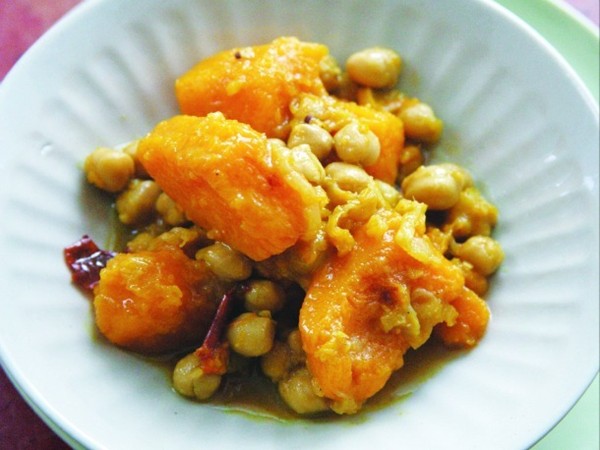The sacrifices made by Bengali widows inspired a cuisine
July 7, 2017 by Darcie 
The state of West Bengal sits on the eastern edge of India, between the Himalayas and the Bay of Bengal. You may know that this area is home to numerous rich and complex vegetarian dishes, but you may be unaware of one reason why this is so. Over at indexed blog Food52, Mayukh Sen explains how a strict ritual diet demanded of high-caste Bengali widows helped create a lush vegetarian cuisine.
Sen relates the story of his great-grandmother, widowed in 1924 at age 37. Following a Hindu tradition, she stripped her diet of many foods: onion, garlic, and red lentils (thought to “conjure sexual energy”), as well as meat and fish. She was limited to one meal per day, and had to make do with a vastly reduced set of ingredients.
Living as a bidhobha (a woman without a husband) was a practice followed only by widows in the highest castes, and was both jarring and alienating. However, says Sen, “these culinary limitations inadvertently contributed to what is now a rich vegetarian cuisine, built around dishes made from scraps of produce. These women are this cuisine’s unsung architects, recognizing a spectrum of possibilities within their loss.”
The essay eloquently explores this topic in more detail; it’s worth popping over to Food52 to read it in full.
Photo of Bengali squash with chickpeas (Cook the Book) from Serious Eats by Anjum Anand
Categories
- All Posts (6638)
- Antipasto (1994)
- Author Articles (241)
- Book News (921)
- Cookbook Giveaways (949)
- Cookbook Lovers (247)
- Cooking Tips (98)
- Culinary News (298)
- Food Biz People (538)
- Food Online (759)
- Holidays & Celebrations (258)
- New Cookbooks (140)
- Recipes (1447)
- Shelf Life With Susie (231)
- What's New on EYB (130)
Archives
Latest Comments
- Elbyem on Fruitful Cookbook Giveaway
- GillB on Second Helpings – Cookbook Giveaway
- FuzzyChef on Food news antipasto
- minbody on Fruitful Cookbook Giveaway
- kimbaddd on Second Helpings – Cookbook Giveaway
- dataentrytard on Fruitful Cookbook Giveaway
- Kristjudy on Fruitful Cookbook Giveaway
- jenmacgregor18 on Pizza Night and Emile Henry Pizza Stone Giveaway
- mcrimmins on Fruitful Cookbook Giveaway
- Laluzdelaluna on Fruitful Cookbook Giveaway